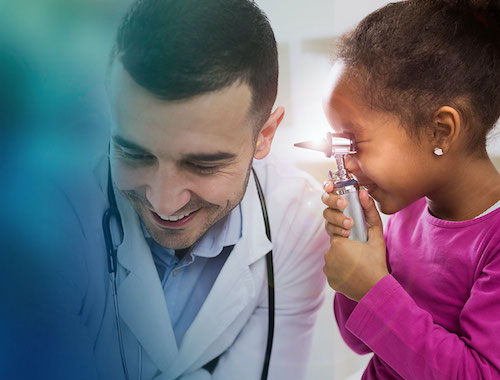Breast Feeding Recommendations:
Approaching breast feeding with a positive attitude is half the battle. We suggest creating a support network of breastfeeding clusters, members of La Leche League and your Pediatrician. Recommended books include: Breastfeeding by Renfrew and C. Fisher (Celestial Arts Publishing Co.); Nursing Your Baby by K. Pryor (Harper and Row); and The Nursing Mother’s Companion by K. Huggins (Harvard Common Press). Talking to your Pediatrician regarding foods that mothers should avoid and medication that is contraindicated is very important. Lactation consultants are also very helpful and will see nursing mothers even after you leave the hospital.
Formula Fed Babies:
Speak to your Pediatrician regarding the brand formula that is best for your baby. Your newborn will take 2 to 3 ounces of formula for feeding and will eat every 3 to 4 hours during his/her first few weeks of life. Regardless of your choice of breastfeeding or bottle feeding, each families needs are different and unique. Frank communication with your Pediatrician would make your feeding time more enjoyable.
Skin Care:
Recommended soaps include: Aveeno Soap Free Bar, Dove and Neutrogena. Do not use routine powders, lotions, creams, Vaseline or baby oil on your baby’s skin or scalp. Avoid baby wipes when you change your baby’s diapers until the bay is about 2 weeks old. A soft cotton wash cloth and plain water will work fine in most situations. Occasionally you may need to use a little soap with the water to clean things up. If you are away from home and do not have a sink, go ahead and use baby wipes.
Umbilical Cord:
Daily cleaning of the umbilical cord is crucial to early detachment. Use of Q-tips and rubbing alcohol at the base of the umbilical cord followed by drying will decrease the chance of early detachment.
Genital Area- Boys:
Circumcised boys usually have a protective bandage for a day or two after the circumcision. After this bandage is no longer needed, you should put a tiny bit of Vaseline right on the tip of the penis to protect the area from rubbing against the diaper and becoming irritated. This should be done until the baby is two weeks old.
Genital Area- Girls:
Baby girls make a whitish material between their labia every day and that is normal. Do not try to remove all of it when you give her a bath, just gently wipe down each crease with a moist soft cotton wash cloth to remove excessive amounts but not all of it. The whitish material is somewhat protective in nature. Newborn baby girls may also have a slight bloody vaginal discharge which is like having a little menstrual flow. That is normal and is nothing to be alarmed about.
Diapers:
Frequent diaper changes are suggested and use of diaper cream (zinc oxide) as a barrier if the skin is getting irritated.
If you should ever take your child to an emergency room at any time, we recommend ONLY St. Mary’s Pediatric Emergency Room or Palms West Hospital Emergency Room. Other community hospitals including Good Samaritan Medical Center, Jupiter Medical Center, Palm Beach Gardens Medical Center, and Columbia Hospital, do not provide pediatric care. For example, St. Mary’s Pediatric Emergency Room has a Pediatrician who specializes in Pediatric Emergency Medicine in the Pedi-ER twenty-four hours a day, seven days a week. St. Mary’s Medical Center and Palms West Hospital has pediatric support services such as Pediatric Intensive Care Unit, Respiratory Services, Nursing Care, and Radiology that are directed toward babies and children.
Clothing and Room Temperature:
Dress your baby in 100% cotton baby clothes because babies are much less likely to get heat rash in cotton clothing than in polyester. Avoid wool clothing or blankets. Set your thermostat to around 77 to 78 degrees.
Safest Place for my baby to sleep:
The safest place for your baby to sleep is in the room where you sleep. Place the baby’s crib or bassinet near your bed (within) an arm’s reach). This makes it easier to breastfeed and to bond with your new baby. The crib or bassinet should be free from toys, soft bedding, blankets, and pillow. Don’t place babies to sleep on adult beds, chairs, sofas, waterbeds, or cushions.
Visitors:
Limit visitors to see your baby to a few at a time. Be careful allowing toddlers to visit your baby because children between the age of one and three years of age very commonly have colds. If a new baby gets an infection and/or develops a temperature of 100.4 or more, then call immediately for an appointment. The practitioner may direct you to the E.R. or recommend an immediate appointment. Procedures such as blood cultures, spinal taps and IV antibiotics will be done to make sure that the baby does not get any sicker and is OK.
First Check-Up:
We follow guidelines established by the American Academy of Pediatrics regarding when the bay should have its first visit to our office. Any baby discharged from the newborn nursery before reaching a full forty-eight hours of age is considered an early discharge and is recommended that they be seen in our office within 48-72 hours.
Emergency Phone Calls:
Our regular office hours are 8:00 a.m. to 5:00 p.m. Monday through Friday. If you call any time other than regular office hours, it must be for an emergency only at (561) 242-0505. Please listen to the prompt to be forwarded to the on-call Nurse, Physician or Nurse Practitioner.
Group B Strep Infections:
Group B Strep (GBS) is a bacterium that can be passed from a mother to her baby at birth. If GBS happens to be passed to the baby during childbirth, it can make the baby very sick, sometimes very rapidly. The mom’s OB doctor usually does cultures on the mom to see if GBS is present, and if so, the mom is treated with antibiotics while in labor. It is very unusual for a baby to get GBS infection if the mom has received antibiotics while in labor. (Rapid labors that do not permit full doses of antibiotics to run through the IV may not be adequate for prevention.)
If you have been told that you tested positive for GBS, you should be aware of the symptoms it might cause in your baby so that you will want to know what to watch for. These symptoms include: fever, unusual irritability – acting as if he/she is in pain or just very cranky. Acting weak, limp or lethargic. Poor sucking or poor feeding. Breathing difficulty – respiratory distress. Although the period of greatest risk for the baby is in the first week of life, GBS infection can occur up to three months of age.
What is Jaundice?:
Jaundice means a yellow color of the baby’s skin and is so common that about one baby out of every three develops jaundice normally. It is caused by a yellow pigment called bilirubin which is made from the breakdown of hemoglobin from within the baby’s red blood cells. When bilirubin is produced faster than the baby’s liver can clear it from the baby’s system, bilirubin begins to build up and cause the yellow color known as jaundice. As the baby’s liver matures in a few days it catches up with the bilirubin production and the jaundice goes away. Prematurity, blood incompatibility, and breast feeding are risk factors. Sunlight and photo therapy are used to treat jaundice.
We have prepared this Newborn information to help you become acquainted with us and with our way of practicing. We look forward to a lasting and happy relationship with your family.




